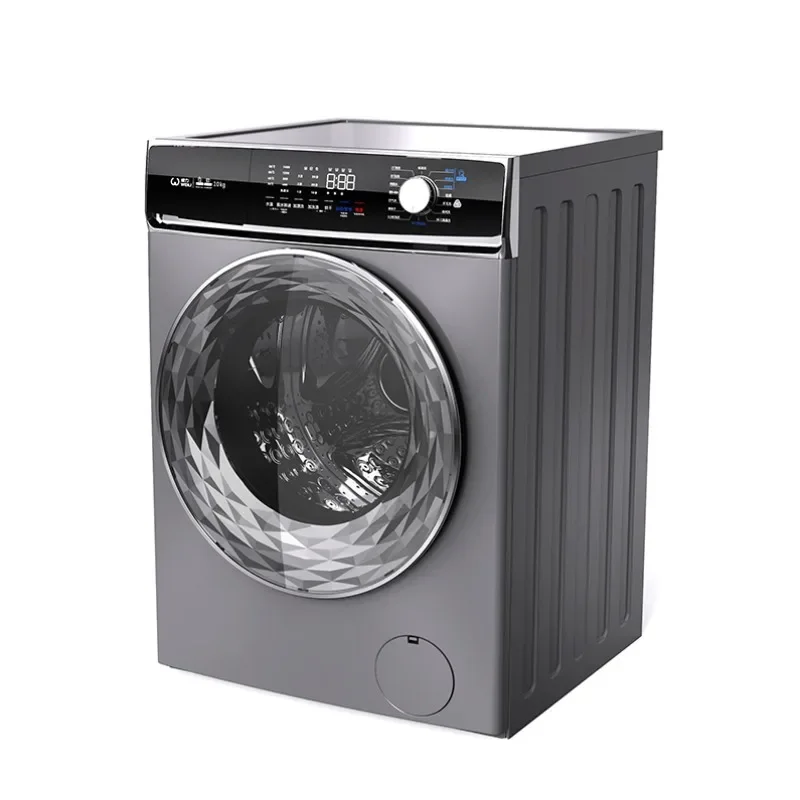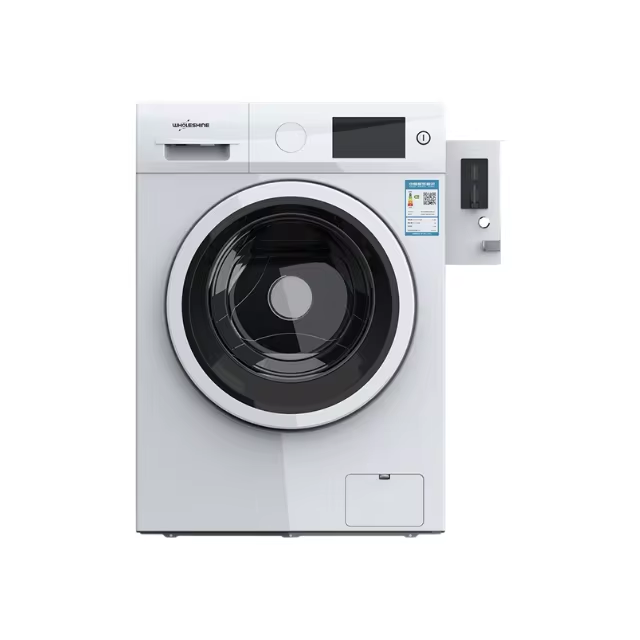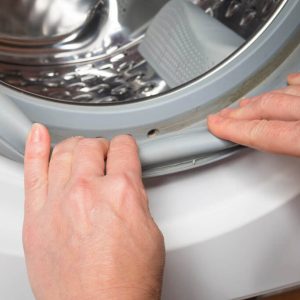Front-Loader Washer Cleaning: Easy Steps
How to clean washing machine front loader? Cleaning a washing machine might seem like an unusual task, but just like any other appliance in your home, your front-loading washing machine requires regular maintenance to ensure optimal performance. Over time, residue, lint, and soap scum can build up inside your machine, leading to unpleasant odors, reduced efficiency, and even mechanical issues. In this comprehensive guide, we’ll explore how to clean washing machine front loaders effectively, covering every step of the process, tips and tricks, and reasons why maintaining your machine is essential.
 Initial Inspection and Setup
Initial Inspection and Setup
Before diving into the cleaning process for your front-loader washing machine, a thorough initial inspection is crucial. This ensures that you spot any obvious issues such as clogs, leftover residue, or visible mold that might require special attention. Also, you want to confirm that the machine is empty and not in use, which prepares it for the cleaning process to follow.
Gathering Required Cleaning Materials
To effectively clean your front-loader washing machine, you will need specific materials. Gather distilled white vinegar and baking soda, as these two are essential for breaking down grime and neutralizing odors. You’ll also need a spray bottle to apply the vinegar solution, a microfiber cleaning cloth for wiping surfaces, and an old toothbrush for hard-to-reach areas. Make sure you have these items handy before you start cleaning. This preparation sets the stage for a successful cleaning regimen that keeps your appliance in optimal condition.
Pre-Cleaning Preparation
To kick-off your front-loader washer cleaning, it’s essential to start with some prep work. This not only ensures you cover all the bases but also guarantees a more effective cleaning process.
Check and Clean the Detergent Dispenser
Begin by inspecting the detergent dispenser. Pull it out gently and check for any soap build-up or residue. Use hot water mixed with a splash of distilled white vinegar to scrub the dispenser clean with a microfiber cloth. An old toothbrush can be useful for tight corners where gunk accumulates.
Inspecting and Wiping the Rubber Seal
Next, closely inspect the rubber seal surrounding the door for trapped debris or moisture. Pull back the seal carefully to reveal hidden areas where mold or mildew may lurk. Wipe it thoroughly with a cloth dipped in white vinegar, ensuring you remove all the residue.
Spraying Vinegar Solution Inside
After dealing with the dispenser and rubber seal, prepare a mixture of equal parts water and white vinegar in a spray bottle. Generously spray the solution inside the drum of the washer, focusing on spots with visible grime. This will start the process of breaking down residues and neutralizing any bad smells.
Washing Machine Cleaning Process
After prepping your front-loader washing machine, it’s time for the actual cleaning. Follow these steps closely.
Running the First Vinegar Cycle
Fill the washing machine with hot water to the highest level. Add two cups of distilled white vinegar to the drum. Start a long washing cycle on the highest heat setting. The vinegar helps to dissolve soap residue and combat mold.
Pausing for Soak and Adding Baking Soda
After the washing machine has filled, pause the cycle. Let the vinegar water mix soak the drum for one hour. This helps loosen and remove buildup. Before resuming the cycle, add a half cup of baking soda. This acts as a scrubbing agent, helping to clean any remaining residue.
Post-Cleaning Steps
After meticulously cleaning your front-loader washer’s interior, the focus shifts to post-cleaning steps. These measures help prevent future grime buildup and maintain the washing machine’s hygiene.
Drying and Airing the Washer
Once the cleaning cycles are complete, it’s important to promote drying. Leave the door ajar to air out the interior. This aids in evaporating any remaining moisture, which discourages mold and mildew growth. For a thorough drying, wipe down all surfaces with a microfiber cloth, concentrating on crevices where water may linger.
Cleaning the External Surfaces
The care for your front-loader doesn’t end inside the drum. Cleaning the machine’s exterior is also crucial. Using the same vinegar solution from earlier, spritz it onto a cloth and wipe down the washer’s front, sides, and top. Pay close attention to the control panel and knobs, as these areas frequently harbor fingerprints and dust. Regularly wiping these areas keeps your washing machine not only physically clean but also looking pristine.
Maintaining a Front-Loader Washer
Proper maintenance ensures your front-loader washer operates efficiently and stays clean.
Routine Maintenance Tips
To keep your washing machine in top condition, perform regular checks and cleaning. Firstly, inspect and clean the detergent drawer and rubber seals monthly to prevent soap accumulation and mildew. Secondly, run a cleaning cycle with distilled white vinegar and baking soda quarterly. This breaks down residue and eliminates odors. Thirdly, keep the washer door open after each use to air out and prevent mold growth. Lastly, wipe down external surfaces regularly to keep the appliance looking new.
When to Use Intense Cleaning Agents
Use intense cleaning agents like bleach for deep cleaning and when dealing with persistent odors or mold. Always consult the washer’s manual to avoid damaging the machine. For intense odor issues, run a cycle with bleach, following it with a rinse cycle to completely remove any harsh residues. This method should be used sparingly, ideally not more than twice a year, to protect the machine’s components.
Troubleshooting Common Issues
Maintaining a front-loader washing machine is not always straightforward. At times, even after a thorough cleaning, certain issues can persist. These might include lingering odors or stubborn stains and residues that normal cleaning cycles can’t tackle. Let’s explore solutions for these common troubles.
Dealing With Persistent Odors
Sometimes, even after cleaning, your washing machine might still have an unpleasant smell. This can happen if mold or mildew linger in hard-to-reach spots or if residue buildup is not fully cleared out. Here are steps to address persistent odors:
- Run an empty hot water cycle with two cups of white vinegar.
- Add a half cup of baking soda to the drum during the rinse cycle.
- Wipe down all surfaces, especially the rubber seal, after the cycle.
- Leave the door open between washes to air out the drum.
If odors remain, consider using a dedicated washing machine cleaner like Affresh, following the instructions on the package. But remember, harsh chemicals like bleach are a last resort and should be used sparingly.
Removing Stubborn Stains and Residues
For stains and buildup that won’t budge, try these tips:
- Make a paste of baking soda and water. Apply it to stained areas. Let sit for 10 minutes, then scrub with a toothbrush.
- For mineral deposits and soap scum, spray a vinegar solution and wait for 15 minutes before scrubbing.
- Check the gaskets and seals for trapped debris and clean them thoroughly.
- For extreme cases, use a small amount of bleach in a hot water cycle. Consult your machine’s manual first.
Remember, regular maintenance can prevent these issues from becoming a headache. Always refer to your washing machine’s manual for guidance on suitable cleaning agents and methods to avoid damaging your appliance.
Conclusion: how to clean washing machine front loader
Learning how to clean washing machine front loaders is integral to maintaining optimal performance, ensuring longevity, and enhancing efficiency. Regular cleaning can help prevent mold, unpleasant odors, and reduced washing effectiveness. By following this comprehensive guide and implementing regular maintenance, you can keep your washing machine in pristine condition. Make cleaning your front loader a routine part of your housekeeping, ensuring that each load of laundry is fresh, clean, and free from any unwanted smells or residues. If you haven’t yet cleaned your washing machine, take the time to do so soon for better laundry days ahead!



